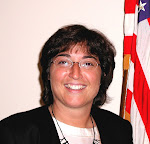Friday, May 7, 2010 – Ponta Delgada, on the island of San Miguel in the AZORE Islands, Portugal
Gray and misty upon arrival and then the sun burned through. The weather varies greatly on this small island – sunny in one area and foggy in another area only 10 miles away.
We would return to the Azores! They are represented in the Portuguese government and the island’s industries are fishing, dairy farming and cattle. Their flag is white and blue with a buzzard in the center and nine stars for the nine islands.
The University opened in 1995. There are hot springs on the island so they can prepare native dishes by cooking them in the earth for six hours. Japanese cedar trees were introduced to the island so they could cut the pliable wood to wrap the fresh oranges for shipping. When a boat was sited approaching the island, they would pick the oranges and wrap them in corn leaves and use donkeys to transport them to the ship.
50-60 cruise ships stop a year so they created a new cruise terminal as they are hoping for 80 ships this year.
I went on a tour, “A Taste of the Azores”, winding our way over the mountains, past the airport, to the west of the island to the small village of Sete Cidades (seven cities), which are dominated by an impressive five-mile-diameter caldera. In the crater lie two volcanic lakes, one green and the other blue. From the highest point, we could see nothing; it was too foggy. From the next level down, we could see the lakes but the sun was not shining to give it any color. We continued down and could see the green in the smaller lake as it reflects the trees at the side of the lake and the blue, which reflects the sky as it is deeper than the green lake.
Wandered around the small village and into the lovely small church in Sete Cidades; the homes have ceramic tiles of their patron saints over the front door. We also stopped at Santiago Lake and then enjoyed local wines and cheeses.
Gene went on a tour to the next largest city, Ribeira Grande, and to Fire Lake. They crossed the Pica da Barrosa mountains and stopped at a pineapple plantation. There are also passion fruit liquor factories and ceramic factories around the island.
The nearest continental land is 740 miles away, Cape Roco, Portugal. Settlement on the island was begun in the 1400s. During WWII, the islands of Lajes and Santo Maria were important air bases and centers of communication between the US and Europe.
Volcanic in nature, the islands rise steeply from the ocean and the shores are littered with rocks and pebbles. The houses are mostly white and black as they use volcanic stone for building. There are numerous steam vents (used for cooking also), boiling mud pools and hot springs of the Furnas Valley. The weather is temperate and the hills lush and green.
In the afternoon, we walked around Ponta Delgada and it was sunny when we started out, and then it rained. We found free WIFI at the Solmar shopping center and called home and worked. We found a beautiful church, the Parish Church of St. Joseph, in the Baroque style of the 18th century. There were beautiful gilded carvings, tiles, paintings and colored and inlaid marble work. We found the Forte de Sao Bras (fort) but could not enter as they are planning for a large festival in town this weekend. The walking streets, square and churches have been decorated; they must be colorful at night. There were thousands of lights on the facades of all the buildings and trees. We were told that many visitors come from Europe for this yearly festival.
Gosia, electrifying harpist, played an unique show of pop Celtic to Spanish Latin and British Classical music.
“Tomorrow is often the busiest day of the week.” - Spanish Proverb
skip to main |
skip to sidebar

Luisa of Preferred Travel, Essex, CT // LGTravel@verizon.net
Author

Followers
Blog Archive
-
▼
2010
(68)
-
▼
May
(11)
- Heading to Home Sweet Home...
- Sea day and BERMUDA
- Whales and dolphins
- Ponta Delgada AZORE Islands
- Lisbon and leaving continental Europe
- Portugal countryside
- Portugal countryside
- Seville Spain
- In the Med
- Valletta Malta and days at sea...trying to savor t...
- Valletta Malta and days at sea...trying to savor t...
-
▼
May
(11)
About Me
- Luisa / Preferred Travel, Essex, CT
- Travel agent and theatre-lover. Always ready for the next adventure! Are you??